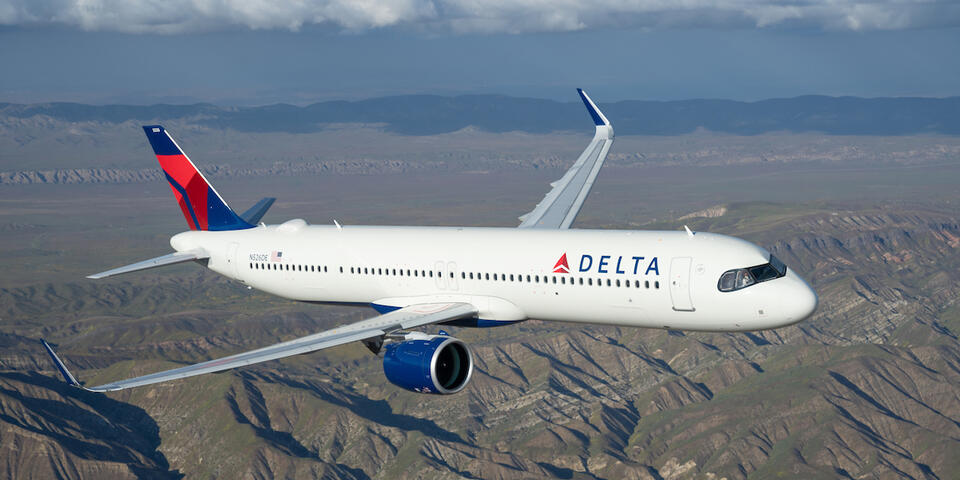Fueling a more sustainable future of travel: What we fly, how we fly, the fuel we use
With approximately 90% of Delta’s carbon emissions coming from jet fuel, the global airline is focusing efforts on “What We Fly, How We Fly, and The Fuel We Use,” each of which is defined by key milestones along the way.

Delta is committed to a path to net-zero emissions by 2050. With approximately 90% of Delta’s carbon emissions coming from jet fuel, the global airline is focusing efforts on “What We Fly, How We Fly, and The Fuel We Use,” each of which is defined by key milestones along the way.
"Aviation is a hard-to-decarbonize sector, and while there is no single path to reaching our net-zero emissions goals, we’re optimistic about the work ahead and the progress we’re making every year,” shared Amelia DeLuca, Delta Chief Sustainability Officer. “Sustainability is good for business, our people, and the planet, and our employees and customers can trust that we’re doing everything we can to advance toward a better future. Our refreshed strategy is a simple way to look at the breadth of opportunity Delta has to drive impact. Throughout our journey, we will continue to learn and evolve with every step we take.”
What we fly
Delta continues to invest in state-of-the-art aircraft to ensure safe, reliable and premium customer experiences that also deliver superior fuel efficiency. Additionally, the airline is partnering with revolutionary technology players to bring to life the aircraft of the future, with a focus on safety, reliability and the employee and customer experience.
For example, Delta is partnering with revolutionary tech partners including both current aircraft manufacturers like Airbus to purchase more fuel-efficient aircraft in the short-term and re-imagine the future of flying, as well as partnering with new partners like JetZero on new airframes unlike anything flying commercially today.
How we fly
As a global airline, Delta is committed to making changes within its control to save on jet fuel, focusing on increasing cost savings and lowering emissions. Delta is also working to deliver a more sustainable onboard experience through initiatives like minimizing single-use-plastic on-board.
Delta’s cross-divisional Carbon Council works collaboratively to save on jet-fuel through initiatives like reducing weight onboard, enhancing landing procedures, optimizing aircraft speed and routing, and reducing auxiliary power unit usage. These initiatives represent Delta’s commitment to reduce jet fuel usage and begin to decarbonize its business starting with the near-term strategies which are in the airlines control today. In 2024, Delta’s Carbon Council saved a cumulative 44 million gallons of jet fuel1, worth more than $100M in cost savings, bolstering profitability and contributing to employee profit sharing. Additionally, Delta has introduced operational KPIs that empower 65% of Delta employees to directly impact and help reduce jet fuel burn, emissions, and costs.
1 Relative to what we would have used if Delta had not undertaken any fuel efficiency efforts, not including fleet renewal.
The fuel we use
With most of Delta’s carbon footprint coming from jet fuel, Sustainable aviation fuel (SAF) is the greatest near-term lever the industry has to achieve its decarbonization goals, and it can reduce lifecycle carbon emissions by up to 80%. However, there isn’t enough being produced annually to fuel the world’s commercial airlines for a single week.
Delta is taking meaningful steps to foster collaboration across the SAF ecosystem through coalition building, like with the Minnesota SAF Hub; advocating for policies to incentivize SAF production; and signaling demand through offtake agreements and demand consortiums to make SAF cost competitive. Delta is also working with its corporate and cargo customers to help them meet their sustainability goals through initiatives like Delta’s corporate SAF buying program.
To learn more Delta’s commitment to people, planet and the communities we serve please see our 2023 ESG Report.
© 2025 Delta Air Lines, Inc.




